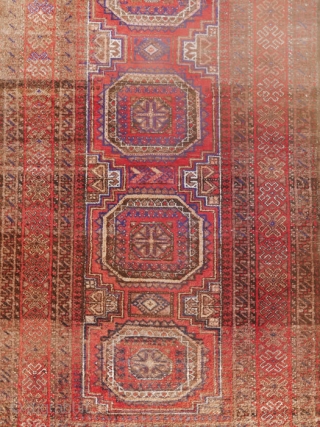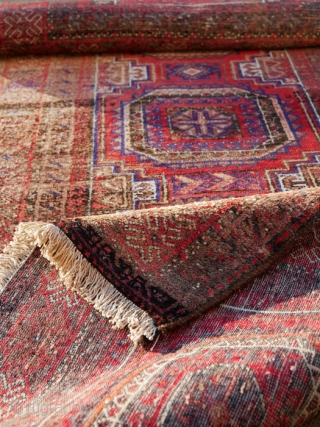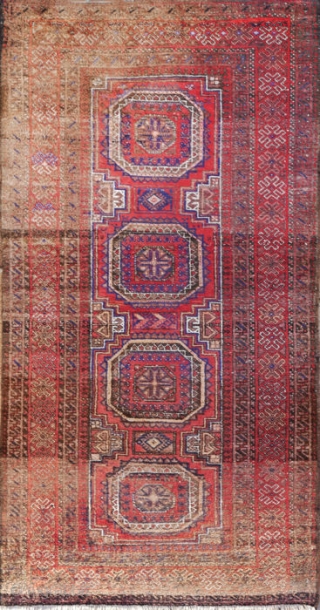Back
Salor Beluch Rug 6.4 x 3.2 feet
Material: Wool on wool
Manufacturing period: 1900-1949
Country: Afghanistan
Condition: Overall in fair condition with traces of ageing and usage
This is an early 20th century runner attributed to the Beluch tribe featuring the so-called Salor gul.
Salor nomads is one of the oldest-recorded Turkoman tribes. This geometric pattern is commonly referred to in scholarship as the Holbein pattern. Hans Holbein, the 16th century German painter is renowned for his extensive use of Ottoman or (as is the case with the Salor gϋl) pre-Ottoman carpet in his painting as part of the backdrop.
This small runner is a work of the nomads from Afghanistan dated likely at the end of the 19th century who followed an ancient pattern inherited from the antiquity, a generation after a generation, without any knowledge of Holbein, and any scholarship in the matter.
price:
SOLD
- Home
- Antique Rugs by Region
- Category
- Profiles
- Post Items Free
- Albums
- Benaki Museum of Islamic Art
- Budapest: Ottoman Carpets
- Gulbenkian Museum
- Islamic Carpets. Brooklyn
- Islamic Textiles. Brooklyn
- Konya Museum: Rugs
- MKG, Hamburg
- MMA: Caucasian Carpets
- MMA: Mamluk Carpets
- MMA: Mughal Indian Carpets
- MMA: Ottoman Carpets
- MMA: Safavid Persian Carpets
- MMA: Turkmen Rugs
- McCoy Jones Kilims
- Ottoman textiles. Met
- Philadelphia Museum
- Rugs and Carpets: Berlin
- Seljuqs at the Met
- TIEM, Istanbul: Carpets
- V&A: Classical Carpets
- Vakiflar Carpets: Istanbul
- Baluch Rugs: Indianapolis
- Gallery Exhibitions
- Jaf an Exhibition
- Alberto Levi Gallery
- Andean Textile
- Christie's London: 2016
- Francesca Galloway
- HALI at 40
- ICOC Washington, DC 2018
- Jajims of the Shahsavan
- London Islamic Week April, 2018
- Mongolian Felts
- Navajo Rugs: JB Moore
- Persian Piled Weavings
- SF Tribal & Textile Art Show 2020
- SF Tribal 2019
- Sotheby's: C. Alexander
- Turkish Prayer Rugs
- Turkmen Main Carpets ICOC 2007











